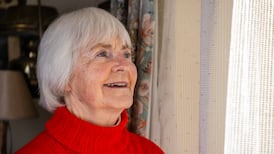In the age of algorithms, apps and social media it is ironic to think that the very technology designed to bring us closer can often leave us feeling more disconnected. Today’s dating apps serve up an endless stream of potential matches, yet meaningful connections can feel elusive. And while many of us are willing to divulge our most personal information online, when faced with real-life encounters we can be hesitant, as if the idea of someone approaching us organically has become almost unnatural.
It’s a stark contrast to the past, when love and friendship were forged not through screens, but in dance halls throughout Ireland and across the Irish Sea in England. In the 1960s, 1970s, and 1980s, when showbands ruled the dance floors, a night out at a Ballroom of Romance wasn’t just about the music – though it played a vital role; it was a catalyst for connection, where you might meet a future partner, land a job or forge lifelong friendships. Long before we started taking pictures of our drinks, we were boldly asking strangers if we could buy them one.
Perhaps that’s why nostalgia-driven Facebook groups such as Irish in London Past and Present, Irish Showbands 1950s/60s/70s/80s and Irish Dance Halls in London in Years Gone By have become so popular. These groups are hubs for those who mourn the loss of dance halls and want to take the opportunity to recall the golden age of the showband era, when acts including The Dixies and Big Tom and the Mainliners packed out venues at home and abroad.
For the Irish diaspora in London during the 1970s and 1980s the dance halls offered a much-needed connection to home, a chance to meet new people at the end of a long week and the potential thrill of catching someone’s eye. There was the excitement of receiving an invitation to dance, the potential spark of connection and, perhaps, the hope of finding love.
READ MORE
While places like The Quex in Kilburn, The Hibernia in Fulham and The Emerald in Hammersmith had their loyal crowds, it was the Galtymore that truly became the stuff of legend. Although it closed its doors for good in the 2000s, its legacy endures through the stories and romances that outlasted its final dance.
For Bernie Rodgers, the Galtymore will always hold a special place in her heart. Having grown up in Paddington in London, Rodgers now lives in Stockport, Manchester, and has been happily married for 43 years, with four children. She met her husband John in 1978 at age 18, on a Saturday night out at the Galtymore. “Oh, it was great,” she recalls. “I went out for a dance, and I came home with a boyfriend.”
The daughter of Irish immigrants, who separated when she was a teenager, Rodgers laughs when she remembers how she and her mother used to head to the Galtymore on the weekend. The venue was divided into two sections, the younger crowd venturing to one side, parents to the other.
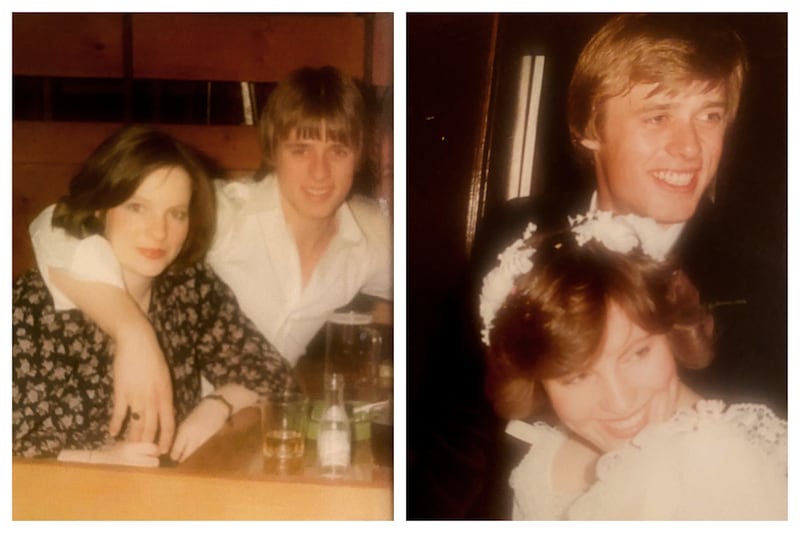
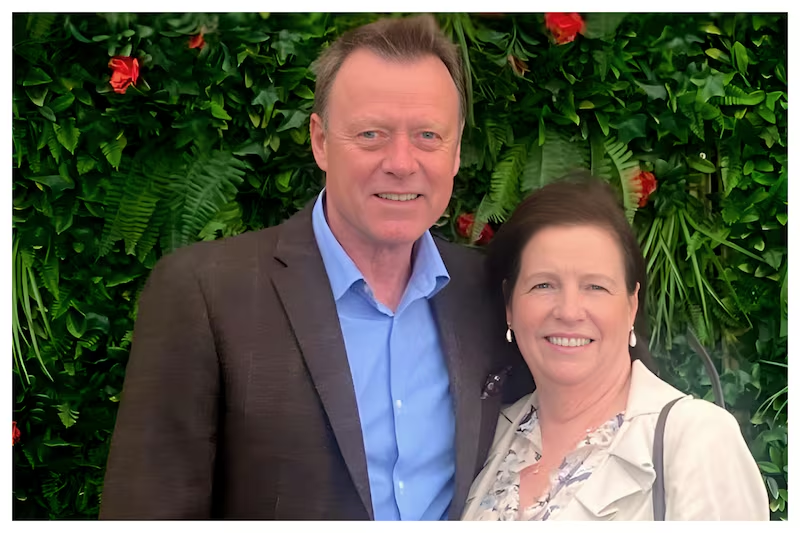
“My mum would go to what we would call ‘the old side’ – though, thinking of it now, she must’ve only been about 42.”
The dances were the highlight of the week for Rodgers and her friends. They would eagerly anticipate the weekends, buying new outfits – often rotating them between each other so there was something “new” to wear. In fact, it was Rodgers’s outfit that first caught her future husband’s attention. As he approached, he walked straight into a large circle of her friends to speak to her.
“I thought he was very brave,” she laughs, recalling the moment. That bravery would come in handy later on when, in quick succession, he met her mother and extended family.
Our second date? Another dance, but this time he met all my aunts and uncles – my cousins too. That was just the done thing – and he didn’t run a mile, so I knew he was a keeper
— Bernie Rodgers
For Rodgers, the atmosphere of the dance hall was simultaneously innocent and intimate. It was a place where fun flourished but respect was paramount. Bad behaviour was not tolerated – the bouncers made sure of that. Anyone acting inappropriately was quickly shown the door. More often than not, it was those who had over-imbibed, perhaps looking for some courage to fuel their evening, who found themselves escorted out. But for those who played by the rules, a set of six dances – three fast, three slow – was all the time you needed to decide to meet, and potentially match with, a person who could become the love of your life.

Pat Greene, who now lives in Brooklyn, New York, remembers those dance hall days vividly. A barman at The Crown in Cricklewood and a bouncer at the Galtymore in the 1980s, Greene witnessed hundreds of hopeful singles flooding through the doors every weekend. A natural people-watcher, he would often retreat to the balcony, where he could observe the dance floor below. He’s also a self-declared great dancer, who enjoyed watching those who were skilled on the floor and mentally noting who was up to par. He remembers that many of the men preferred the slow dances – though not for the reasons you might think.
“It wasn’t just about getting close to a woman,” he explains. “It was because the steps were easier and you could see the lads who weren’t great dancers relax when the steps were simpler. They were less self-conscious.”
For Rodgers and her friends, conversations with a new dance partner could range from lighthearted banter to serious fact-finding missions. Finding out about a man’s “seed and breed”, she says, was fair game, but so too were practicalities – like whether he owned a car. A “yes” would prompt a subtle thumbs-up to the girls at the bar, a silent signal that a lift home had been secured, freeing up their bus fare for another round of drinks.
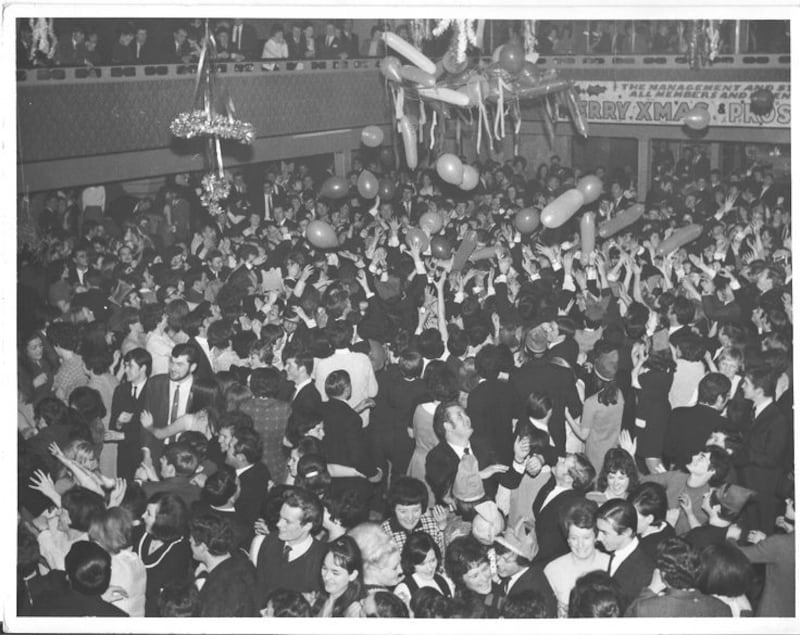
She fondly remembers the night her husband approached her. A Donegal native, off the boat only a matter of weeks, he made a beeline for Rodgers and complimented the rose on her dress – a simple remark that opened the door to a drink, a dance and, by the end of the night, a drive home.
“He even came in for tea and to meet my mum,” she says. “Our second date? Another dance, but this time he met all my aunts and uncles – my cousins too. That was just the done thing – and he didn’t run a mile, so I knew he was a keeper.”
Their courtship, like so many others, played out to the rhythm of the dance hall. Living on opposite sides of London meant meticulous planning. Every Tuesday night they’d walk to the phone booths at the end of their respective roads, timing their calls down to the minute. Miss it, and that was that – no texts, no second chances, just a long wait until Saturday, where an explanation would be expected, if they showed up at all.
Between scheduled calls, meeting cousins and courting under the watchful eyes of parents (often in full view on the dance floor), there was little room for ambiguity. If you liked someone, you made it known. Any hesitation, and by the following week you might be watching them waltz into the arms of someone else.
Relationships back then were built on shared moments, anticipation and the quiet hope that the next dance might lead to something extraordinary. These dance halls weren’t just places to move to the music; they were the heart of courtship, community and young love.
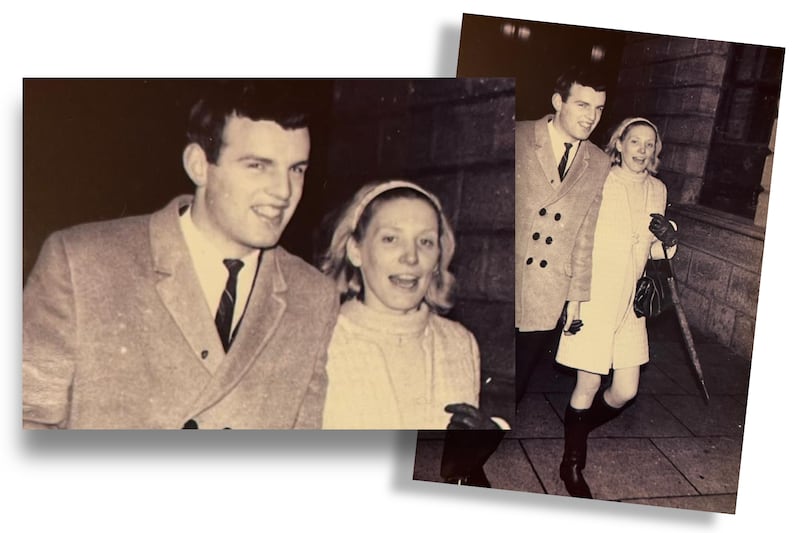
Bernard Conlon, from Dublin, remembers them as vital social hubs for his generation, and he laments that young people today don’t have the same opportunities to meet face-to-face.
With a chuckle, he recalls his own time spent in a showband in the 1960s. Many a Friday morning, he and a group of pals would load up their van, travel the country, and play to packed venues over the weekend – feeling every bit the rock’n’roll stars. Closer to home, he timed his visits to cousins in Sligo to coincide with the marquee weekends – legendary dance nights held in large tents that popped up in rural parishes throughout spring, summer and autumn.
This was the showband circuit in full swing, with home-grown acts filling the dance floors with energy and giving young people a rare and electrifying escape. In the country towns, where the clergy’s influence still loomed large, these weekends were a much needed release.
It was at a Garda dance on Dublin’s South Circular Road in 1968 that Conlon first spotted the tall, beautiful woman who would go on to become his wife. He asked her to dance and a small misunderstanding on the dance floor turned into an inside joke that lasted throughout their 50-year marriage.
I’d be talking to auld lads at the bar and even 50, 60 years later they were still in love with a girl they never had the courage to ask out. They’d come into the dance halls for a bit of company
— Pat Greene
“She asked me if I could drive,” he chuckles, “and I sheepishly admitted I only had my provisional licence.” A confused look and a few clarifications later revealed she’d actually asked if he could jive. And as it turned out, he could. “I wasn’t the greatest dancer,” he says, “but when we danced together, it was like we were cut from the same cloth – like it was meant to be.”
Three weeks – and many jives – later, he proposed. They married in 1970, building a life filled with love, laughter and music until Anne passed away four years ago.
Conlon looks back now with nostalgia at the way things used to be for young couples dating. The simplicity of the era meant that couples might meet on a Saturday night, share a dance and make plans to see each other again. Months or even mere weeks later, they might be engaged.
These were different times, Rodgers agrees. “There wasn’t the endless second-guessing we see today,” she says. “You got to know someone quickly, often in the space of a few dances.” There weren’t infinite options at your fingertips, there were no notifications pulling your attention in different directions – it was all about just about the person in front of you, with both of you giving it the chance to see where it might lead.
Of course, it wasn’t all plain sailing. To fall in love during a dance, you first had to actually ask someone to dance – and for some people, that was a step too far. Pat Greene remembers many men who were simply too shy.
“I’d be talking to auld lads at the bar and even 50, 60 years later they were still in love with a girl they never had the courage to ask out. They’d come into the dance halls for a bit of company – they’d be on their own, but they weren’t alone in there, if you get me. And sure, the drink became their companion too, I suppose.”
Perhaps this is where modern technology has its merits. For those who once lacked the courage to strike up a conversation, apps can provide a safe starting point. But over-reliance on them risks stripping away the serendipity that makes romance special. Today, we have infinite choices, yet connection feels more elusive. Back then, you didn’t need hundreds of matches – you just needed one good dance.
And sometimes you have to trust your instincts. Rodgers recalls how John told her he loved her after just a few weeks of courting. Young and fond of him but overwhelmed, she let him leave her house that evening without making plans for their next call. As the minutes ticked by, a gnawing feeling grew – had she just let him slip away? With no phones and no easy way to contact him, the odds of seeing him again felt slim. Worse still, would he avoid the Galtymore altogether after being rebuffed?
As fate would have it, Rodgers’s aunt’s boyfriend was home that evening, car keys in hand. Acting on impulse, she begged him to drive her to the nearest Tube station, hoping to catch John before he disappeared into the London night. Luck was on her side – she found him. Breathless, she apologised and asked if he’d be at the Galtymore that weekend. “You’ll have to wait and see,” he replied as the train doors slid shut behind him.
Saturday arrived, and Rodgers turned up at the Galtymore, feeling nervous and hopeful in equal measure. And there he was. From that moment on, they were inseparable.
Forty-three years later, it’s clear she still feels the same way about her husband. “He has been the best father and the best husband I could have ever wished for,” she says. In the absence of dance halls, her daughter now goes to Irish bars in Manchester, hoping to meet someone like her dad. Rodgers isn’t convinced – or maybe she is just a bit biased. “I don’t know if she will – I don’t know if they make men like him any more,” she says.
On a weekend when many couples are celebrating Valentine’s by going for a dinner or a night out, Rodgers’s experience serves as a reminder of the importance of taking a chance. How we pursue romance may have changed but the search for love remains the same. And while the dance floors may be gone, a relationship can still begin with a bold approach and the courage to ask, “Can I buy you a drink?”



